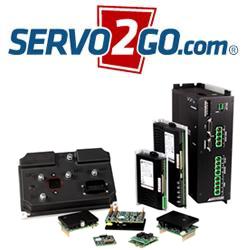How Robotics and IoT Are Changing the Trucking Industry
The supply chain wouldn't be able to function without the trucking industry. As crucial as this sector is, it faces some substantial challenges as shipments grow and market demands shift. Trucking is ripe for disruption, and technology like Internet of Things (IoT) devices and robotics are leading the charge.
.jpg)
Here are five ways these technologies are transforming the trucking sector:
1. Enabling Self-Driving Trucks
Driverless trucks are the most immediately apparent application for robotics in trucking. The industry doesn't have as many drivers as it needs, and long-distance routes present safety risks for human drivers. Self-driving trucks would solve both problems at once.
Starsky Robotics, which started as a regular trucking business, already has three autonomous trucks in its fleet. For now, these vehicles need human drivers to oversee them, but the more they run, the better the system gets at driving. As companies continue to train these robots, they edge closer to a future free of risks like distracted drivers.
2. Improving Maintenance and Repairs
The manufacturing industry has already employed IoT technology to monitor the performance of factory equipment. Trucking can do the same, using IoT devices to sense when a vehicle might need servicing. This practice, called predictive maintenance, can help trucking companies avoid costly repairs by addressing issues early.
Repairs and maintenance cost an average of $15,000 a year for trucking companies. Some issues are difficult to see before they become a more severe problem, but IoT monitoring devices can help. These sensors can communicate if anything is out of the ordinary as soon as they detect it.
3. Simplifying Fleet Management
Tracking drivers' locations, speeds and driving habits helps companies manage expenses like gas and insurance. While hardwired or built-in fleet management tools can provide this data, they're typically inflexible and expensive. Newer IoT devices, on the other hand, offer a more straightforward solution to this system.
Bring-your-own-device (BYOD) electronic logging devices (ELDs) use drivers' smartphones to transmit data that fleet management software can use. BYOD ELDs use the phones that drivers already carry to upload information to the cloud. This setup saves money on equipment and enables companies to move the hardware into a new vehicle if necessary.
4. Automating Loading and Unloading
Robots don't have to be inside a truck to help trucking companies. Warehouse robotics can automate the loading and unloading process, saving time and maximizing productivity. These robots can work alone or alongside humans — either way, they reduce the time a truck has to spend in the warehouse.
With faster loading and unloading, trucks can cover more routes in a day. Industry giants like FedEx and UPS are already adopting these systems, despite the technology being relatively new. As last-mile deliveries increase and the industry faces worker shortages, automation like this is essential.
5. Protecting Delicate Shipments
Transporting sensitive cargo like plants has proven to be a challenge for the trucking industry. With IoT technology, companies can monitor things like temperature and humidity and broadcast this information to drivers or managers. That way, they can adjust their route as necessary to maintain the quality of delicate shipments.
These advantages are so promising that 70% of retail and manufacturing companies have started adopting IoT devices in their supply chains. As adoption increases, the technology will improve, leading to even more benefits. In the future, customers may be able to track their packages' quality through the delivery process, too.
Trucking Is Becoming a More Tech-Centric Industry
IoT technology and robots are starting to disrupt the trucking sector. Like many other industries, trucking is undergoing a digital transformation, becoming more data-driven and tech-centric every day. Today's cutting-edge technology will be standard practice before long.
Many of these advances are still in their early stages. Despite the novelty, they're already seeing impressive adoption numbers. The trucking industry has the potential to be one of the most high-tech sectors out there, and it's quickly moving that way.
Comments (2)
Featured Product

